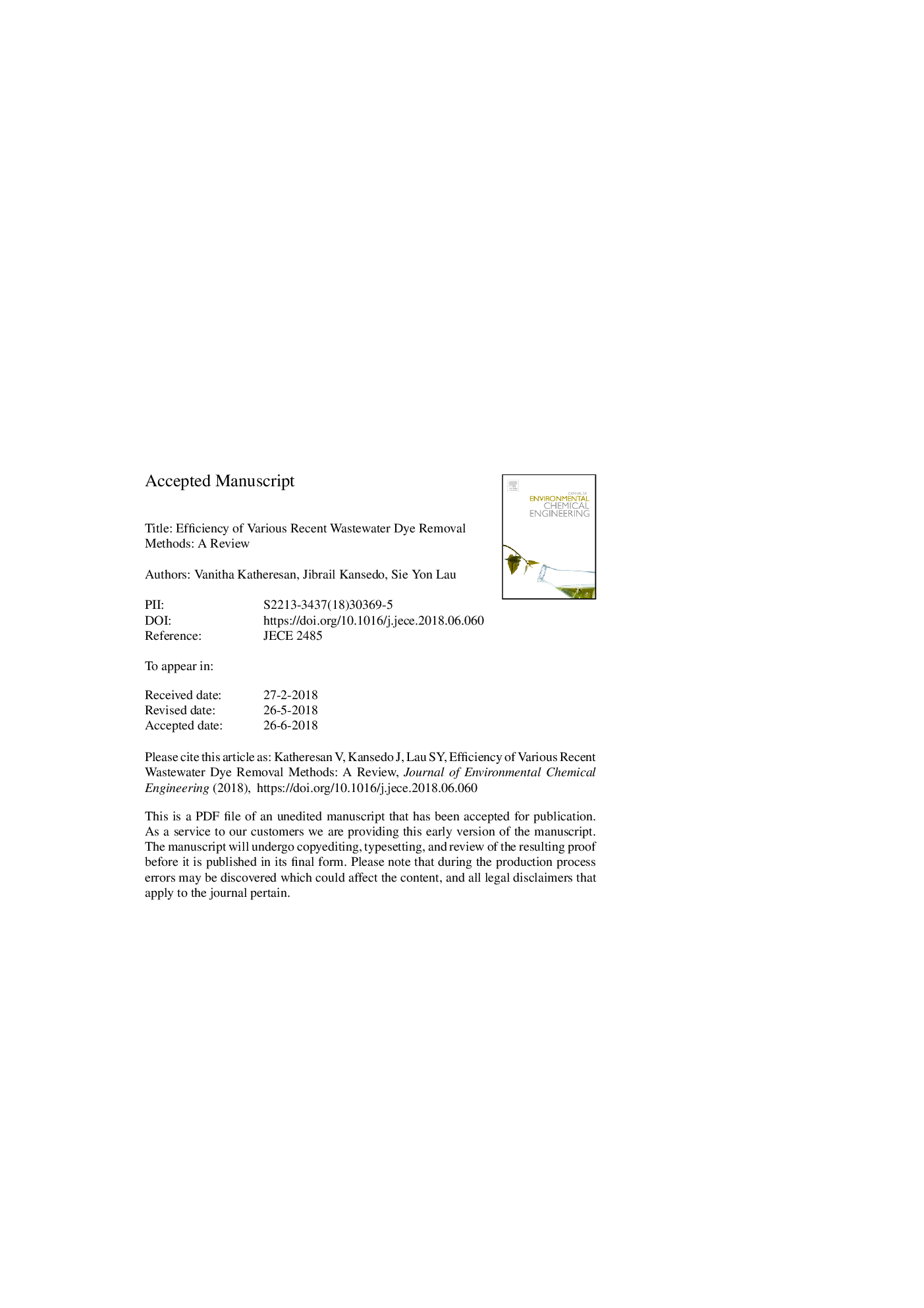| Article ID | Journal | Published Year | Pages | File Type |
|---|---|---|---|---|
| 6663801 | Journal of Environmental Chemical Engineering | 2018 | 90 Pages |
Abstract
Dye effluents released from numerous dye-utilizing industries are harmful towards the environment and living things. Consequently, existence of dye effluent in environmental water bodies is becoming a growing concern to environmentalists and civilians. A long term sustainable and efficient dye effluent treatment method should be established to eliminate this issue. Dye wastewater should be treated first before release to minimize its negative impacts towards the environment and living things. However, due to lack of information on efficient dye removal methods, it is difficult to decide on a single technique that resolves the prevailing dye effluent issue. Therefore, this paper reviews existing research papers on various biological, chemical and physical dye removal methods to find its efficiency through percentage of dye removal. Although there are numerous existing tried and tested methods to accomplish dye removal, most of them have a common disadvantage which is the generation of secondary pollution to the environment. This paper highlights enzyme degradation (biological) and adsorption (physical) dye removal as these are known as one of the most efficient dye removal techniques these days. This paper also suggests the usage of a combined adsorbent as it is envisioned that this technique has better efficiency and is able to remove dyes at a faster rate.
Keywords
Related Topics
Physical Sciences and Engineering
Chemical Engineering
Chemical Engineering (General)
Authors
Vanitha Katheresan, Jibrail Kansedo, Sie Yon Lau,
